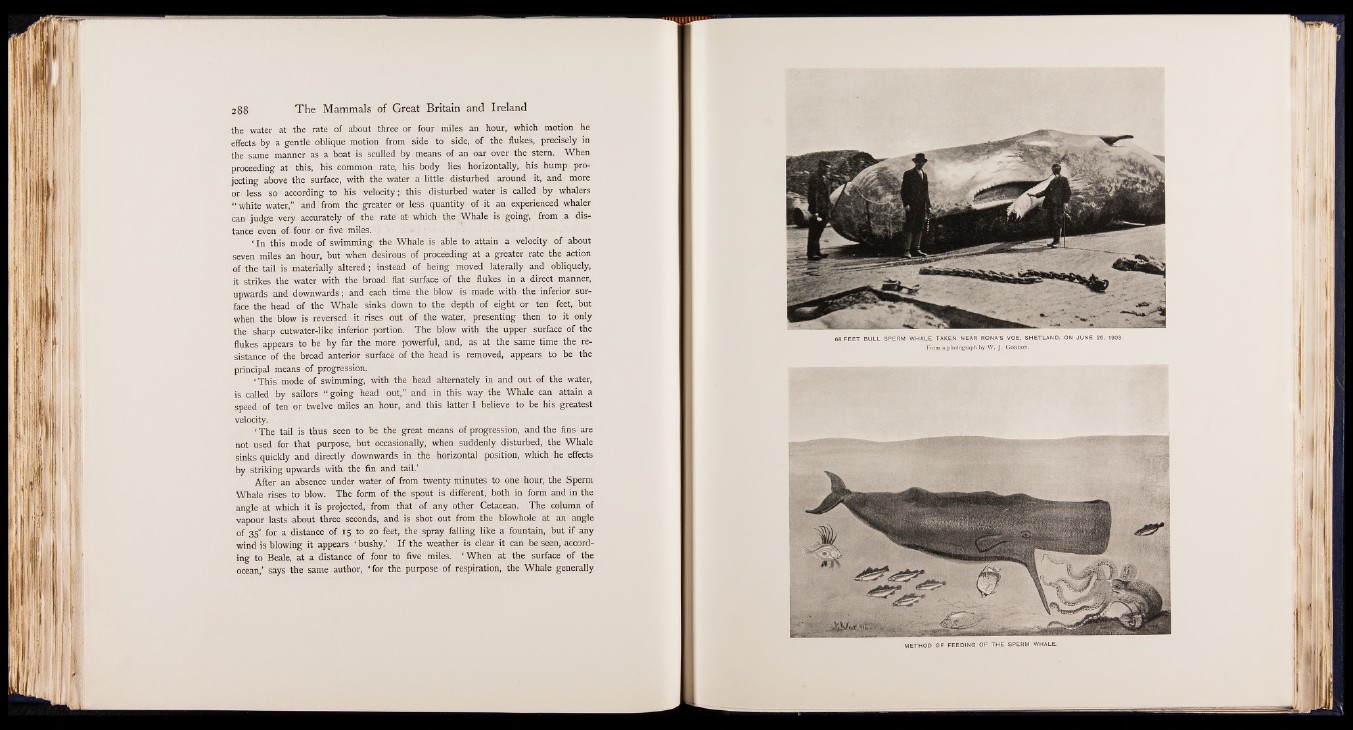
the water at the rate of about three or four miles an hour, which motion he
effects by a gentle oblique motion from side to side, of the flukes, precisely in
the same manner as. a boat is sculled by . means of an oar over the stern. When
proceeding at this, his common rate, his body lies horizontally, his hump projecting
above the surface, with the water a little disturbed around it, arid more
oridesS so according to his velocity; this disturbed-water ||| called by whalers
“ white water,” and: from the greater or less quantity - of it an experienced whaler
can .judge -very, accurately of. the rate at-which the Whale is going, from a distance
even- of. four: or. five miles. ;.
‘ In this mode of swimming- the Whale .is able to. attain a velocity of about
seven miles an hour, but when desirous of proceeding at a greater rate the action
of the tail is materially altered; instead of being moved laterally and obliquely,
it strikes the water with the broad flat'surface of the flukes in a direct manner,
upwards and downwards; and each time the blow is made with the inferior surface
the head of the Whale sinks down to the depth of eight or ten feet, but
when the blow is reversed it rises ,out. of the water, presenting then to it only
the sharp cutwater-like inferior portion. The blow with the upper surface of the
flukes appears to be by far the more powerful, and, as at the same time the resistance
of the broad anterior surface of the head is removed, appears to be the
principal means of progression.
‘ This mode of swimming, with the head alternately in and out of the water,
is called by sailors “ going head out,” and in this way the Whale can attain a
speed of ten or twelve miles an hour, and this latter I believe to be his greatest
velocity.
‘ The tail is thus seen to be the great means of progression, and the fins are
not used for that purpose, but occasionally, when suddenly disturbed, the Whale
sinks quickly and directly downwards in the horizontal position, which he effects
by striking upwards with the fin and tail.’
After an absence under water of from twenty minutes to one hour, the Sperm
Whale rises to blow. The form of, the spout is different, both in form and in the
angle at which it is .projected, from that o f . any other Cetacean. The column of
vapour lasts about three seconds, and is shot out from the blowhole at an angle
of 35° for a distance of 15 to 20 feet, the spray falling like a fountain, but if any
wind is blowing it appears ‘ bushy.’ I f the weather is clear it can be seen, according
to Beale, at a distance of four to five miles. ‘When at the surface of the
ocean,’ says the same author, 'for the purpose of respiration, the Whale generally